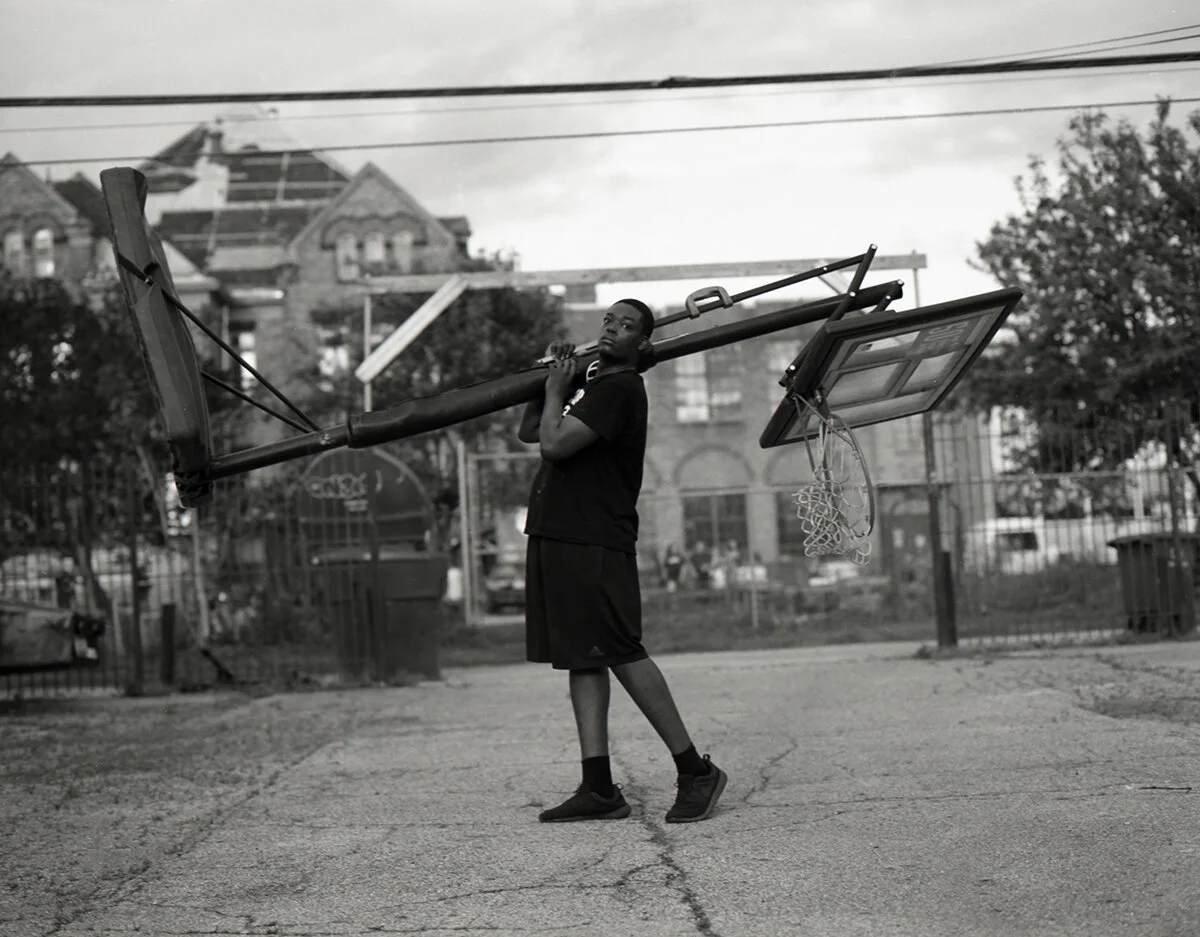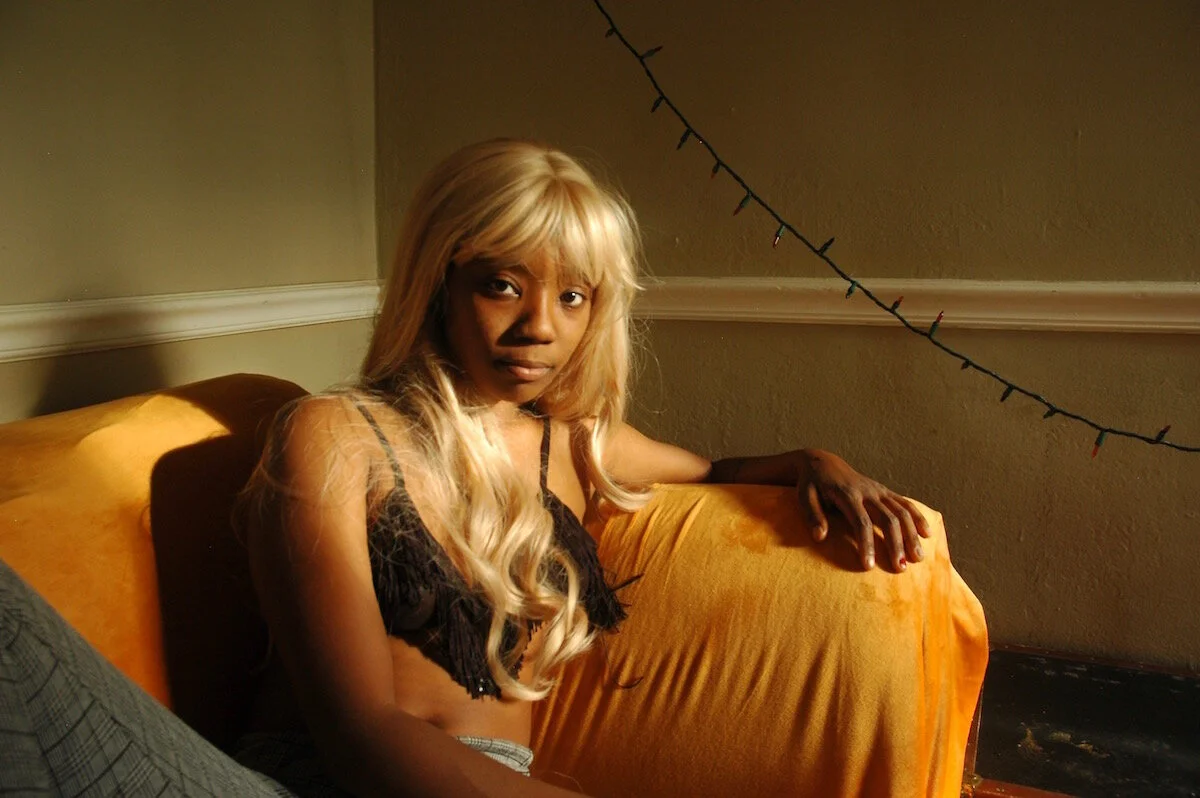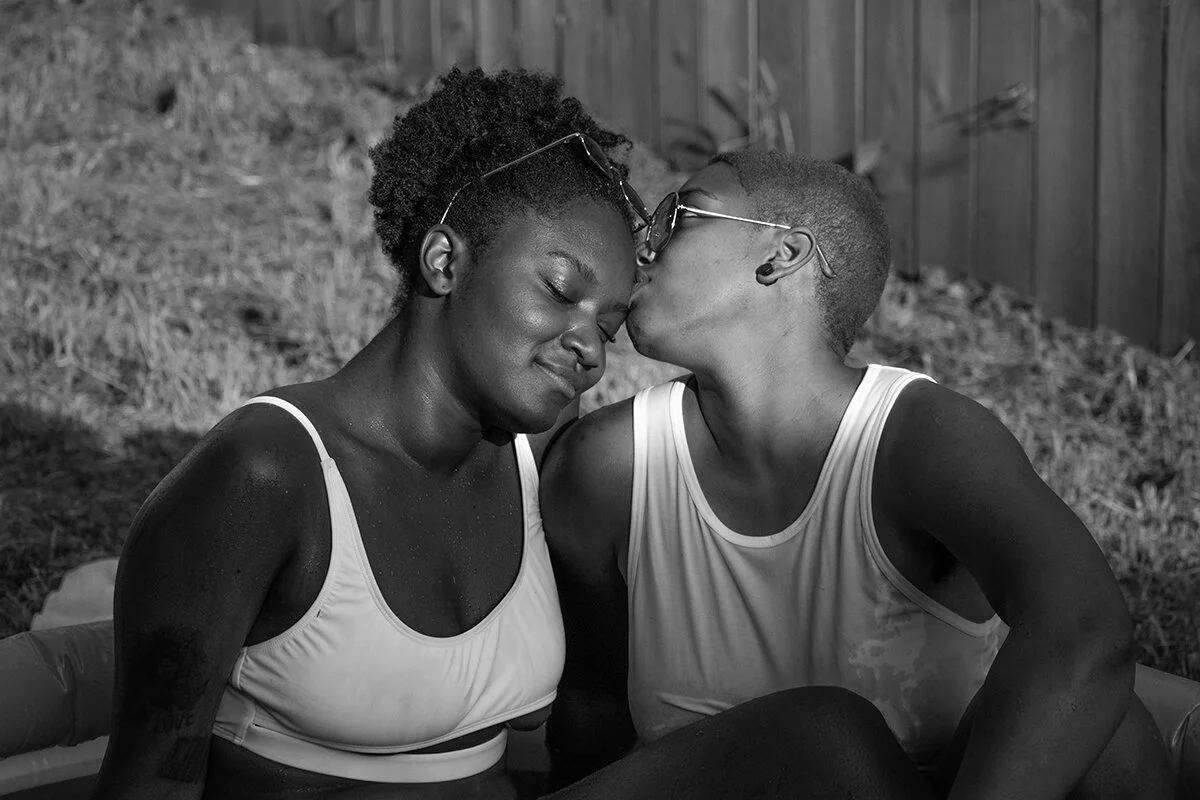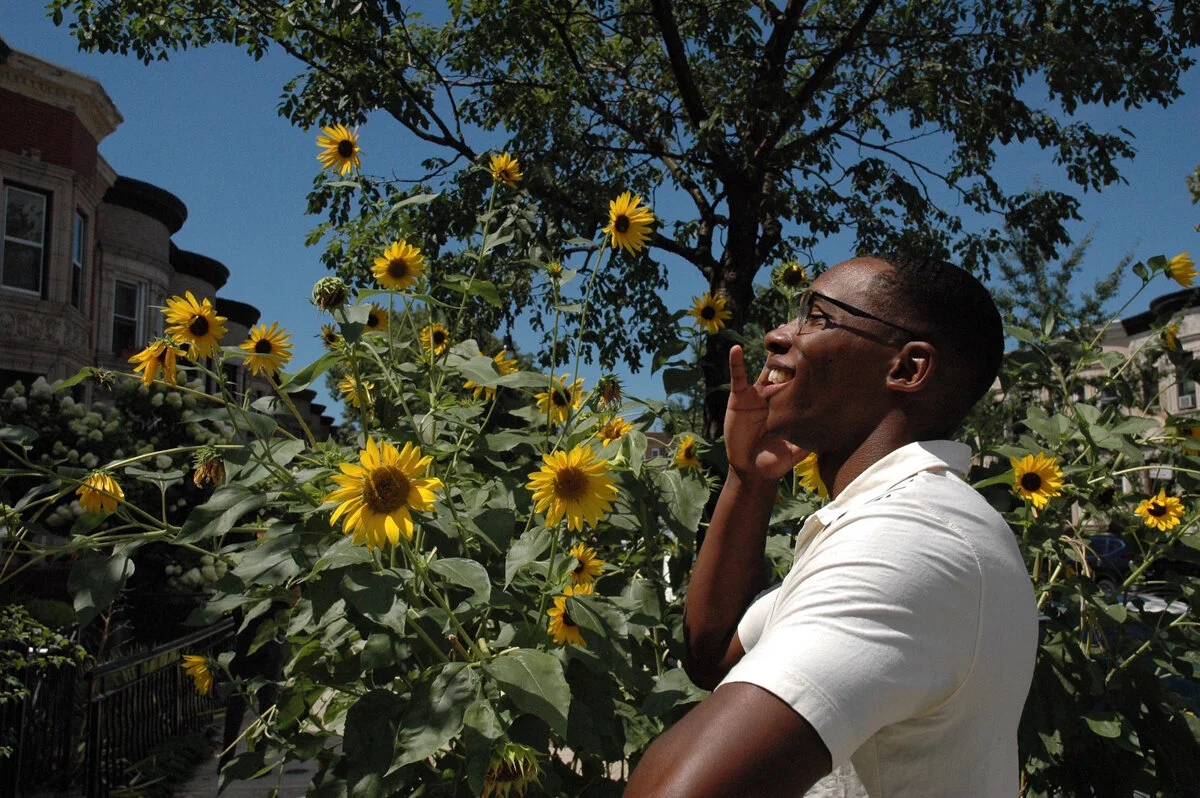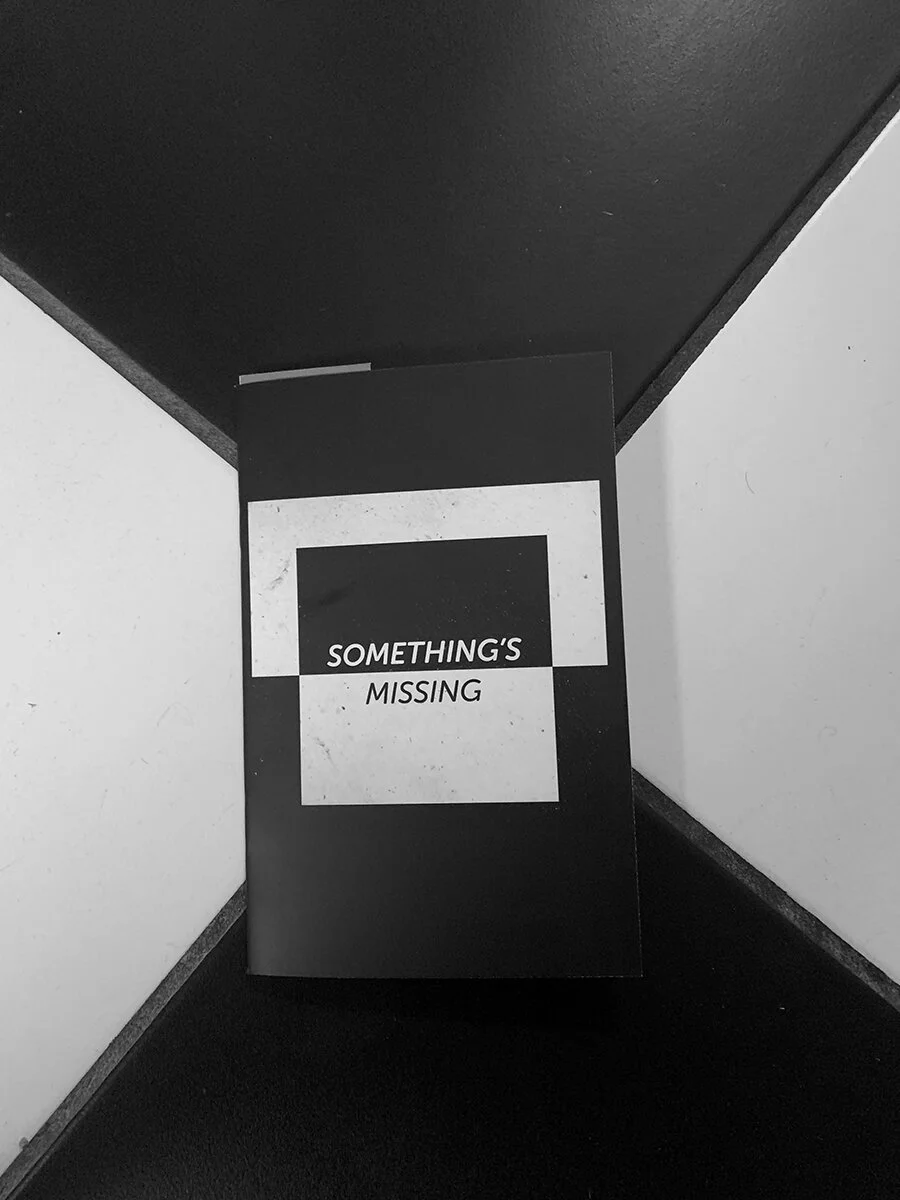© Zachary Francois
Artist and curator Zachary Francois speaks with photographers from “Something's Missing,” an exhibition and photobook curated to reframe the expectations of Black artists today.
When I first conceived “Something’s Missing,” my immediate response was that I needed to approach the exhibition as tastefully and respectfully as humanly possible. It wasn’t just a show of Black photographers’ lovely and intense work, it was also a moment to break the mold of what it means to be a Black artist today, and to have one’s work cared for by a curator who shares the same canon. We are often lumped together in our practices simply by our shared identity, our individuality removed. “Something’s Missing” became the vessel to replace the myth of universal cultural experience with something more nuanced.
I want people to critically engage with these artists without preconceived ideas of what a Black artist is and should look like. I see these ideas as a function of white supremacy and hold no power to constructively engage with Black artists. I hope galleries and institutions take note of how critical it is that curators of color lead, look over, and facilitate shows that come from shared cultural identities because it causes the artists to be heard and seen sincerely.
Zachary Francois in conversation with Juanese Davis, Benjamin Willis, and Kelli Mckinney
(editors’ note: the conversation was conducted after the exhibition at The Bakery Atlanta closed, but you can purchase a catalog by DM’ing Zachary Francois thru Instagram.
© Juanese Davis
Zachary Francois: Greetings everyone and congratulations! How is everyone feeling about the show so far?
Kelli Mckinney: The show was amazing, the content was refreshing and beautiful, glad to have been a part of it.
Benjamin Willis: I’m thoroughly impressed with how seamless Zachary executed the show, the curation, the organization, and the book! I’m truly humbled to have been a part of this whirlwind of an experience.
Juanese Davis: This was my first official show and I have to say it has felt really good to the soul, I enjoyed the concept, the extra use of Photobooks, and it felt much more personal. Zachary made me feel very cared for throughout the process and cannot wait to see more of them and everyone else apart from Something's Missing in the near future.
© Kelli McKinney
Francois: What is the importance of Black photographers documenting their own communities and the power that comes with exhibiting these narratives in formal spaces?
Davis: I think the power comes from being able to access art that reminds you of yourself on any given day. The important work of photographers who happen to be Black is perspective. How often do you get to see a point of view that does not come a cisgender and/or heterosexual white person? The bodies of work from Black and Brown communities can sometimes limit our abilities to express anything that would not sell to the “mainstream”, but the more we explore art the less pressure there is to serve your plight on an acrylic canvas.
Mckinney: The power in Black people representing themselves through the arts is that it is the act of rewriting history. Black narratives have always been told and sold second and third hand in the western mainstream, so opportunities for Black people to take ownership over their narrative is paramount not only for the artist who may already be aware but for the audience(s) who have perhaps been brainwashed.
Willis: I often ask myself when out in the fray "who will replace me" if I'm not the one to show this place and time? My community, my people. Moreover, how I choose to present the former is almost more important than inserting myself into the role of the artist at all. Time and time we have seen artists lie to us about how their images came to be, going off to lands unknown and extracting "art" to bring back to their own.
I think it's very important as a Black artist that I show the love I have for my people, that we are beautiful, that we are complex, and not a monolith. I think that truly powerful art has to come from a place of love, profound love. I know I can only answer that for myself. So whenever I feel uncertain about the task at hand I ask "who replaces me?" will they have the love I have for my people, my city. Will they see them as I see them?
© Benjamin Willis
Francois: How do you approach image-making when creating a body of work?
Davis: My images stem from my emotions as cliche as that may be. I tend to struggle with identifying what I am trying to say or what I feel using words. Using textures, and getting to be messy and make mistakes that end up being exactly what I needed is what helps to free me from the limitations of my own expectations (ego). I take the pictures, edit and then create the final story at the end.
Mckinney: My approach in creating work is rather spontaneous. As someone who can be unorganized at times, my work is oftentimes unplanned, and a result of me remembering to take my camera with me wherever I go (a rarity), and friends who are willing to participate in storytelling. When I do make intentional or planned work, it is oftentimes based on my idea of celebrating Black people, alchemy, connection to ancestry, and the intersection of nature architecture and infrastructure.
Willis: I think the future. I think about how I compose the scene, the setting I find my subject in. As I mostly create portraits I think about the framing of the person I’m photographing and thus I’m reducing the scene to simply the subject and then building back up from there. After the scene has been reduced and then reconstructed to just the essentials I think about how to frame/compose that gives the subject dignity and perpetuity.
© Zachary Francois
Francois: What could institutions do to not only be inclusive with the artist who they exhibit but truly honor the work from artists of marginalized identities?
Mckinney: HIRE BLACK & MARGINALIZED PEOPLE!! Literally, that’s it. It is very insulting to me when institutions feign ignorance towards the issue of “inclusion”.
Willis: Institutions structurally feed off the work of Black artists and their work, their communities long after both have gone. Supporting artists and serving the Black community while both are alive is a start. How can we make these institutions more accessible to communities is a great way to introduce art to Black people. Beyond that, showing work of and by Black people who are alive and getting them in on programming is so needed. So often The people I photograph, the kids especially have no idea that they can be artists.
Davis: Social institutions are in desperate need of a vacation. Having upper-class whites control all of the resources is a very tired trope in human society. However, I would not want another race to assume the role of sole benefactor.
I instead reimagine a world that is much more relaxed in its approach to art. Less hierarchy, less stress to make the perfect body of work worthy of showcasing and/or monetizing, and just an appreciation for the labor, intention, and soul of creation. I often think we have forgotten how vulnerable it is to put yourself on display for thousands to see, especially if the art piece stems from some sort of trauma. To be crass about who is more worthy to be on the great white wall serves no purpose in the grand scheme of human existence.
© Kelli McKinney
Francois: What drives you to make the work that you do?
Mckinney: What drives me to make my work is love and anger. I love being a Black woman. It is such a beautiful experience just to be Black and be a part of a history that is so rich; I would never change that if given the chance. I am angry at the ways in which western media has abused and perceived and marketed Black people. So I create work to combat that image. Even the negative image of Black people will be celebrated: large noses, sagging pants, baby hairs, weaves, afros, the ghetto, the suburbs…
Willis: For me, it’s that notion of “who replaces me” and who will do it with the love and admiration I have for the people and place I’m from. Beyond that I’m just trying to help people, it always strikes me how many people don’t believe they’re of worth for something as simple as a portrait. Often I’m rebuked with “you want to photograph me?” in a tone that suggests that they’ve been told somewhere along their life that they aren’t worth that. So if it’s as simple as asking someone to take a photo of them and it makes them feel good, that's a good day for me.
Davis: What drives me to do my art can be broken up into so many layers, but I’ll simplify it into two factors: the lack of Black Trans art as it pertains to the multifaceted experience of our existence and the fact that my brain gets overloaded with information and art is the most interesting outlet for everything it encounters.
© Juanese Davis
Francois: Has the pandemic influenced or affected your current practice?
Mckinney: The pandemic has affected my practice, I think it has affected the art world period.
Willis: Honestly, I think it’s made my practice more thorough, more important, more needed. The photograph is more than what it seems. It can at once be a window and a mirror. A kind of looking glass for connection, but also for reflection.
Davis: I have been impacted very positively in regards to my artwork since the global pandemic. I was still in college when it happened, and after I finished the semester I decided not to go back because it was very overwhelming to have my teachers try to encourage me to persevere as if this was not a monumental tragedy. Instead, I turned inwards, and since I was not working and not in school I had the freedom to explore myself and the world around me through arts and crafts.
© Zachary Francois
Francois: What compels you to photograph the groups of people that you do?
Davis: I take photographs of the people I am mostly around which are Black Trans/Queer folks. They are the people who keep me safe, who show me the most love and care and it is a way for me to reciprocate that love. Black Trans kinfolk inspire me every day with how they show up in the world and are so bold and vibrant with their love for life and self-expression.
Mckinney: I want people to see themselves how I see them. The groups of people I photograph mainly consist of my friends who are Black and lovely. And sometimes I am lucky enough to come across a stranger who will let me take their picture. The beauty of the world also drives my work, the colors, patterns, and natural functions of the universe will never cease to amaze me.
Willis: I try to photograph what is taking place around me, I want to add there’s an important practice of being a photographer, which is knowing when not to photograph. There are rites, emotions, and spiritual places that require reserve and respect, places where exposing photos has no place.
© Benjamin Willis
Francois: Who are some artists/ activities that inspire your practice?
Davis: Two photographers who inspire me most are Michael Aboya from Ghana and Arieanne Evans who happened to be in the show with me! Michael takes many photos showing the beauty of continental Africa and it is such a joy to see. His pictures are some of the most crisp photos I have ever seen, so much so that you feel like you are able to touch the subjects. Arieanne has a very unique style and I love the use of the brown tones in her photos, she is definitely a force to be reckoned with.
Mckinney: I am inspired by the artists of the Harlem Renaissance whose avant-garde and free mentality from Jazz to Visual Arts truly laid the groundwork for contemporary artists of today. I really enjoy the work of Lee Friedlander, Diane Arbus, Chi Modu, and Roy Decerava. I was also so impressed by all of the artists who presented in Something’s Missing.
I’m really inspired by musicians, I walk or ride my bike to make photographs, the music puts me into a rhythm and I’m a firm believer that everything is jazz. I’m also inspired by writers and painters more so than other photographers, like James Baldwin, or Hanif Abdurraqib, Octavia Butler, Bell Hooks, Claudia Rankine, and Toni Morrison. Cinematographers, Directors, and Archivists as well, Darol Olu Kae is really good. I enjoy Andre Wagner's work a lot, Gioncarlo Valentine, and Rahime Fortune’s photowork as well.
© Juanese Davis
Francois: How did you feel, knowing that your work was viewed and arranged through the lens of a Black curator?
Willis: I felt relief and gratitude in such a different manner than when my work is selected for other shows. I’m not sure how to fully explain it but it felt like there wasn’t going to be any kind of asterisk.
Davis: It made me ecstatic to know that someone Black was calling the shots because I could relax and not have to worry about being micromanaged. Since the Black Lives Matter movement in the summer after the violence that became of George Floyd I have seen more folks who are not Black get involved and while it is nice, I have also seen my fair share of people taking up space and profiting off of it in the name of exposure for the movement.
˙© Kelli McKinney
Francois: Was there a change in jobs or opportunities for you during the surge of global uprisings? Have brands tried to reach out to you due to your identity?
Willis: Yes, I recently worked with Apple on the Hometown series, for Black history month. And now there seems to MORE floating into my inbox.
Davis: I personally have not had anyone reach out to me because of how I identify. I tend to keep a low profile on social media because a face to my name is not necessarily what I am after. I have been surrounded by people, however, who have had opportunities float their way and it is always wonderful to watch loved ones be recognized for their talents.
Mckinney: Not necessarily; but hopefully that will change, I gratefully take opportunities as they come. Oftentimes I get discouraged, maybe I will never be recognized for my work in a conventional way...but then I think how ridiculous and egocentric that mindset is. I make art for me!
© Benjamin Willis
Exhibition catalog produced by Soft Lightning Studio and designed by Tati Pinckney. Features the work of Arielle Bobb-Willis, Alexis Childress, Kavozia Glynn, Danae Antoine, Jillian Marie Browning, Keamber Pearson, Jourdan Barnes, Arieanne Evans, JaLeel Marques Porcha, Juanese Davis, Demetri Burke, Benjamin Willis, Chelsea Mukenya, Kendall Bessent, Natrice Miller, Vanessa Leroy, and Kelli McKinney. To purchase a copy, DM Zachary Francois on Instagram.
Francois: Who are you as an artist and what makes your work your work?
Willis: I’m just a Black boy from Columbus, Ohio. I’m just trying to show the people where I’m from that this place, the people that surround us, are special. You just have to be able to see it, and once you can see it you can believe it. That’s where I come in. The seeing, the showing. It’s the trick bag, getting people to invest in one another, showing them the beauty in it all, at least I try. I think you can see that in my work. That what I’m showing needs to be seen, who I’m showing you needs to be seen and they need to be seen fully and beautifully and with love and respect because the world can try and take that away from us. We are so quick to forget our worth.
Davis: I am a Black Trans (country) Boy from Charlotte, North Carolina. I am here to leave a trail for my ancestors whose names I do not know in the past, present and future. My work is a reflection of who I am as an Earthling, messy, layered, textured, a bit confusing, yet breathtaking. I am inspired by everything, even down to the tiniest ant and as badly as humans have treated the gift of life. I just want whatever entities that cross my path to know that there is peace within the chaos whether that be through a photograph, sculpture, canvas or lyric.
Mckinney: I am an artist, a Black woman, a cynical optimist, and someone who believes in the power of movement, in any way shape or form. Movement is alchemy, and it is my goal to become a fully realized alchemist. My roots are burrowed in the South (Atlanta, Ga), but I have always been questioned about that “you talk white/ you’re not really from Atlanta/ what are you mixed with?” are questions I have been asked, since forever. My response was usually to answer those questions with a question. I have learned though, that people don’t ask questions because they want to hear the truth, they want to hear their perceptions or biases be confirmed. Ultimately, I am compelled by the power and sanctity of nature; and I have learned so much from the waters and the trees who are ever silent, and yet ever-changing.




